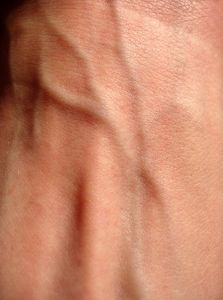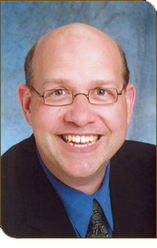Varicose veins are veins that become gnarled and/or enlarged in your body, often because of pressure. This happens the most in your legs and feet, since standing upright puts the most pressure on any part of your body. Varicose veins are also referred to as spider veins, however, spider veins are usually considered milder and more common forms. While varicose veins may not cause any concern for some people, in others it can cause serious pain and problems. If nothing else, varicose veins can be an indicator that you're at risk for other circulatory problems. If you have varicose veins, it may be a good idea to bring it up with your doctor on your next visit, if it isn't bad enough to warrant a visit all by itself. Sometimes problems with varicose veins can be solved by yourself, and there are plenty of resources online with simple tricks, such as leg elevation and compression stockings.
What's happening: When blood is returned to your heart from the rest of your body, it travels through the veins. Veins coming from the bottom of your body have to fight gravity to reach your heart again. In order to prevent blood from literally falling back down the pipes of your veins, muscles contract behind each pump of circulation. This can make the blood pool in certain areas, with factors like pregnancy and age contributing to the likelihood of this happening.
What's happening: When blood is returned to your heart from the rest of your body, it travels through the veins. Veins coming from the bottom of your body have to fight gravity to reach your heart again. In order to prevent blood from literally falling back down the pipes of your veins, muscles contract behind each pump of circulation. This can make the blood pool in certain areas, with factors like pregnancy and age contributing to the likelihood of this happening.


 RSS Feed
RSS Feed